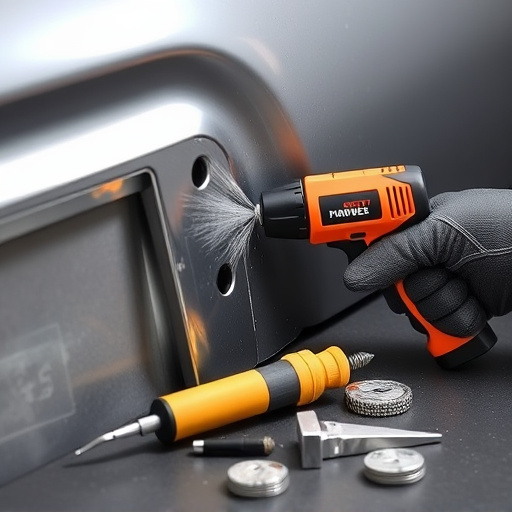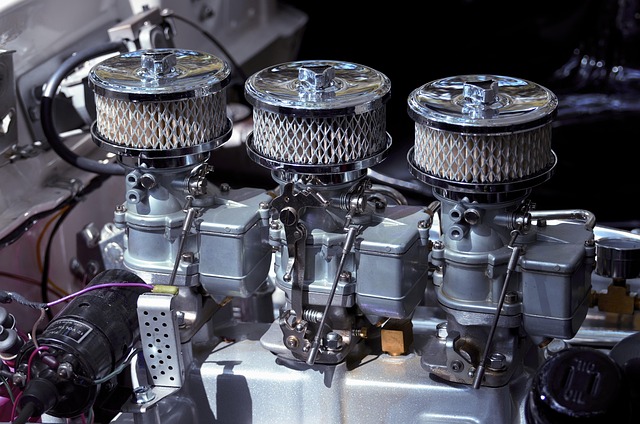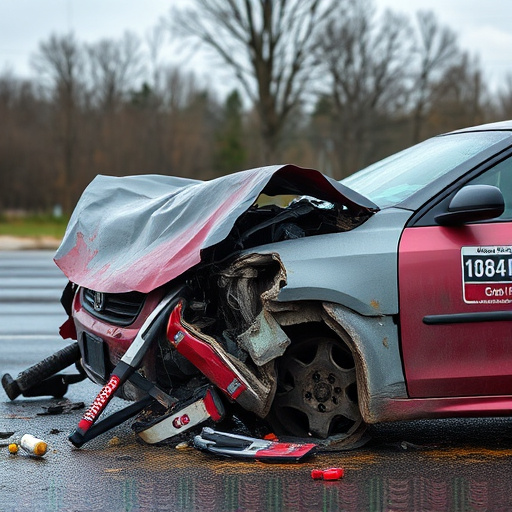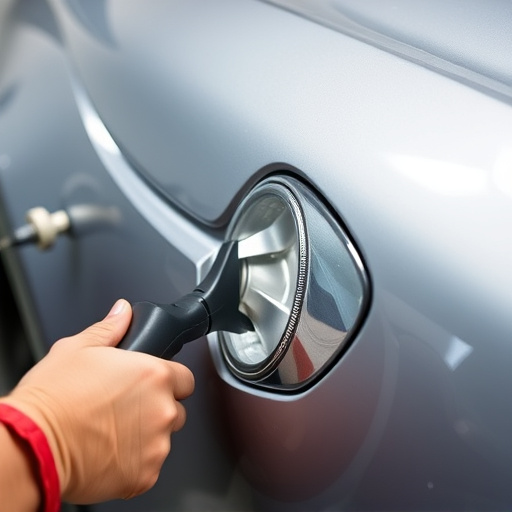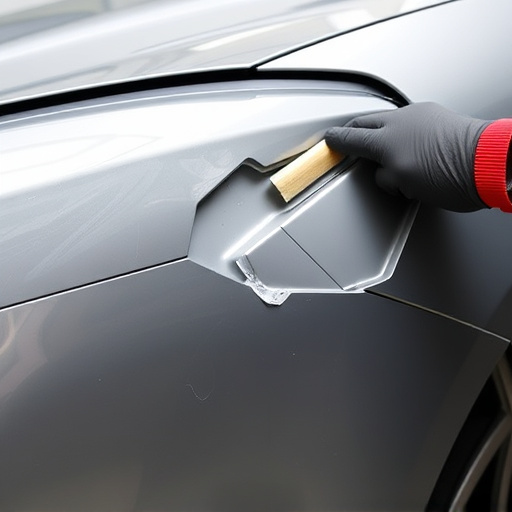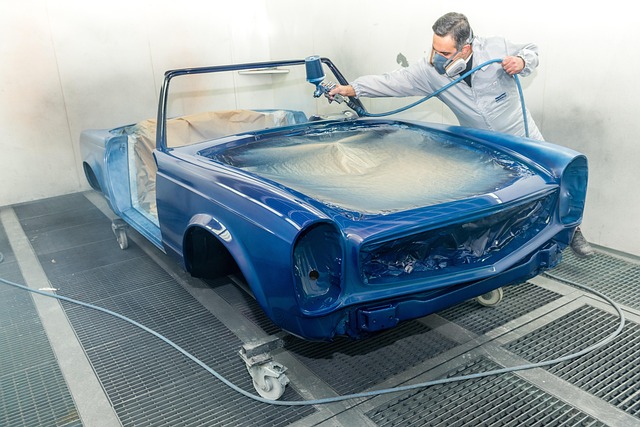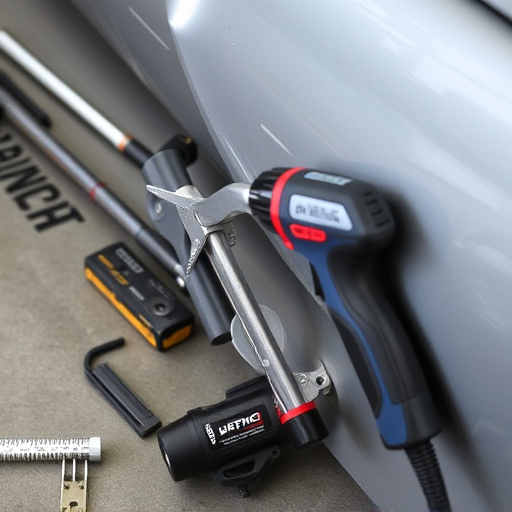Tesla 12V system repair demands meticulous diagnosis due to intricate interconnectedness. Common issues include power loss, sparking, and faulty grounds caused by worn parts or damage. Regular maintenance, using a multimeter for voltage testing, and thorough inspection are crucial. Persistent problems may indicate fuses, relay modules, or wiring harnesses as culprits. Preventive measures like terminal cleaning and surge monitoring are key to avoiding future repairs. Engage experienced professionals for accurate diagnosis and effective long-lasting solutions.
Experiencing power loss in your Tesla? The issue could lie within the vehicle’s 12V system, a critical component for many essential functions. This guide delves into the intricate world of Tesla’s 12V systems and common problems like battery issues or faulty components. By understanding the system and following a step-by-step repair process, you can restore power to your Tesla effectively. Learn how to diagnose and fix problems related to this vital component, ensuring your electric vehicle operates smoothly.
- Understanding Tesla's 12V System and Common Issues
- Diagnosing Power Loss in Your Tesla Vehicle
- Step-by-Step Guide to Repairing the 12V System
Understanding Tesla's 12V System and Common Issues

Tesla’s 12V system is a crucial component that powers various essential components of your vehicle, from lighting and electrical systems to audio equipment. Understanding this intricate network involves grasping its interconnectedness; a problem in one part can cause disruptions across the entire system. Common issues include power loss, intermittent sparking, and faulty ground connections, often stemming from worn-out components or damage during accidents. A Tesla 12V system repair is not merely about replacing parts but requires meticulous diagnosis to identify the root cause, ensuring long-lasting solutions.
Regular maintenance plays a significant role in preventing such problems, but even with care, vehicles may experience glitches due to environmental factors and age. For instance, corrosion on terminals or damage to wiring during an auto glass replacement or collision center repair can lead to power loss issues. Therefore, when addressing Tesla 12V system repairs, it’s vital to engage the services of experienced professionals who possess the expertise and tools to navigate these intricate systems, ensuring your vehicle returns to its optimal operating condition.
Diagnosing Power Loss in Your Tesla Vehicle

Diagnosing power loss in your Tesla vehicle involves a systematic approach to identify the root cause. Start by checking the most basic components, like the battery connections and fusible links, ensuring they’re secure and undamaged. A multimeter can be used to verify voltage levels at various points within the 12V system, helping you isolate faulty parts or circuits.
Symptoms like dim lighting, slow accessory operation, or unexpected shutdowns could indicate issues with the alternator, voltage regulator, or other electrical components. In some cases, power loss might be attributed to collision damage repair or automotive restoration work that didn’t correctly address underlying electrical problems. Thoroughly inspecting and testing these systems is crucial for effective Tesla 12V system repair.
Step-by-Step Guide to Repairing the 12V System

Repairing a Tesla’s 12V system involves a systematic approach to resolve power loss issues. First, locate the 12V battery, typically found in the engine compartment or under the vehicle. Inspect for any signs of damage, corrosion, or leaks. If the battery appears compromised, consult a professional auto body shop for safe removal and replacement, similar to dent removal on your car’s exterior.
Next, check the positive and negative terminal connections with a voltage tester. Tighten loose connections and clean corroded terminals using a wire brush. Ensure all electrical components powered by the 12V system are functioning correctly. If issues persist, diagnose further by examining related components like fuses, relay modules, and wiring harnesses. Regular maintenance, including cleaning battery terminals and checking for power surges, can prevent future Tesla 12V system repair needs, keeping your vehicle’s vital systems reliable.
Repairing a Tesla’s 12V system can be a complex task, but with proper understanding and diagnosis, it’s achievable. By identifying common issues like faulty components or loose connections, you can restore power to your Tesla vehicle effectively. Following the step-by-step guide provided, you’ll be equipped to tackle this repair yourself, saving time and costs. Remember, a well-maintained 12V system is key to ensuring your Tesla’s optimal performance and reliability. For any challenges, consider consulting detailed resources or seeking expert assistance tailored to Tesla repairs.
